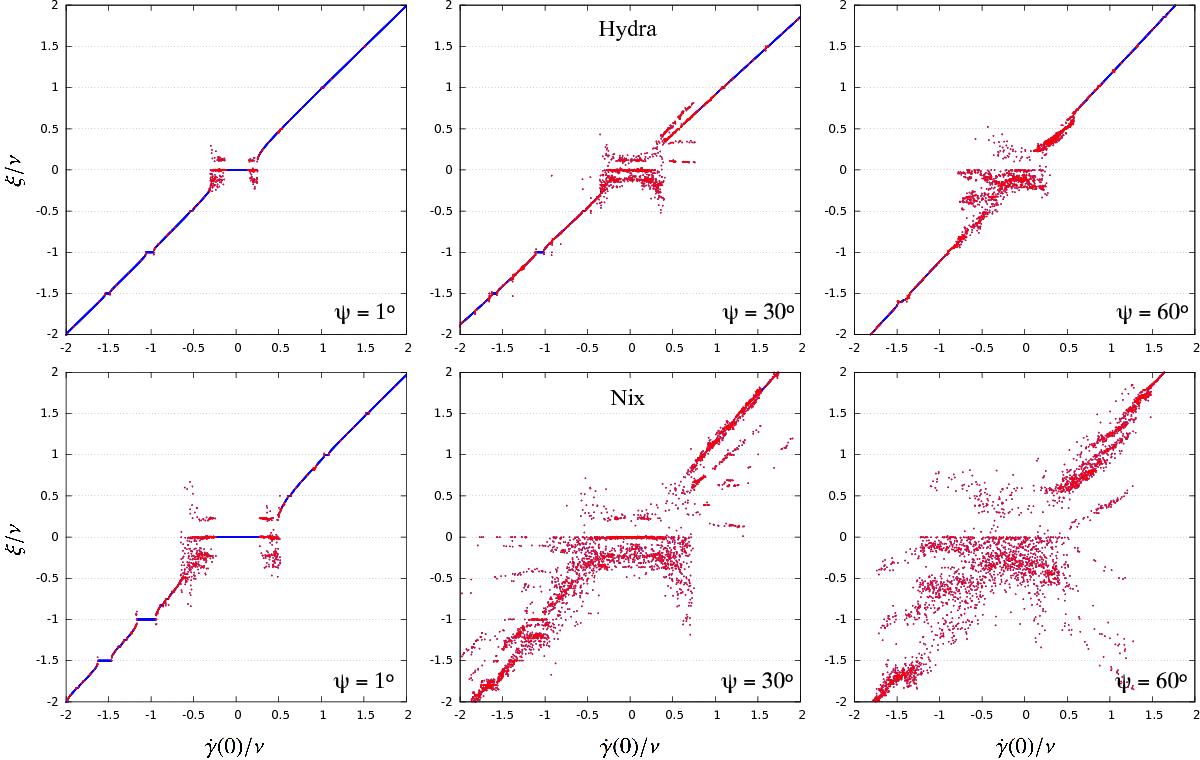Fig. 3

Cross sections representing the spin dynamics of Hydra (top) and Nix (bottom) at different initial obliquities ψ = 1°, 30°, and 60°. The dots show the main frequency of γ(t), denoted by ξ, for different initial values of ![]() . It is obtained by numerical integration of the three-body problem together with Eqs. (A.1) and (A.2) for the rotational motion (without dissipation). θ is initially set equal to f so the sections go through the middle of the synchronous resonance (
. It is obtained by numerical integration of the three-body problem together with Eqs. (A.1) and (A.2) for the rotational motion (without dissipation). θ is initially set equal to f so the sections go through the middle of the synchronous resonance (![]() ). All the remaining variables are initially set to zero. The dots are blue for stable rotation (libration or circulation), and red for chaotic motion. The distinction between stable and unstable trajectories is based on the estimate of the second derivative of ξ with respect to the initial condition
). All the remaining variables are initially set to zero. The dots are blue for stable rotation (libration or circulation), and red for chaotic motion. The distinction between stable and unstable trajectories is based on the estimate of the second derivative of ξ with respect to the initial condition ![]() (see Laskar 1993). The plateaus correspond to the resonance crossings (ξ/ν = k/2). The red dots randomly distributed between the plateaus indicate the overlapping of the associated spin-orbit resonances, which generates chaotic motion.
(see Laskar 1993). The plateaus correspond to the resonance crossings (ξ/ν = k/2). The red dots randomly distributed between the plateaus indicate the overlapping of the associated spin-orbit resonances, which generates chaotic motion.
Current usage metrics show cumulative count of Article Views (full-text article views including HTML views, PDF and ePub downloads, according to the available data) and Abstracts Views on Vision4Press platform.
Data correspond to usage on the plateform after 2015. The current usage metrics is available 48-96 hours after online publication and is updated daily on week days.
Initial download of the metrics may take a while.


